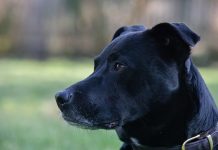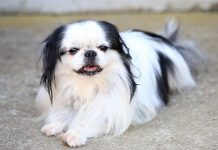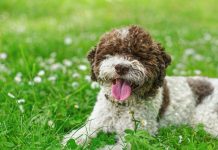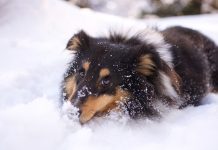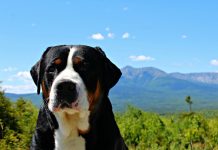History and Origins of the Greyhound Breed

The Greyhound is an ancient breed known for its speed and graceful appearance. Here’s a brief overview of the history and origins of the Greyhound:
- Ancient Roots:
- The Greyhound is one of the oldest dog breeds, with a history dating back over 4,000 years.
- They were originally bred as hunting dogs by ancient civilizations, including the Egyptians, Greeks, and Romans.
- Images of Greyhounds can be found in ancient art and artifacts, depicting them as revered and valued companions.
- Hunting and Racing:
- Greyhounds were historically used for hunting game, including deer, hare, and other small animals.
- Their exceptional speed, keen eyesight, and stamina made them highly effective hunters.
- In more recent centuries, Greyhounds became popular in coursing and later in competitive racing events.
- Noble and Royal Connections:
- Throughout history, Greyhounds were favored by nobility and royalty.
- They were often depicted in paintings alongside aristocrats and were considered symbols of wealth and status.
- Spread and Development:
- Greyhounds spread across Europe and eventually to other parts of the world through trade and exploration.
- Over time, different types of Greyhounds emerged, each adapted to specific hunting conditions and environments.
- Modern Roles:
- Today, Greyhounds are primarily kept as companion animals and athletes in racing and lure coursing events.
- They are known for their gentle and affectionate nature, making them beloved family pets in many households.
Physical Characteristics and Appearance of Greyhounds
Greyhounds are known for their distinctive appearance and athletic build. Here are the key physical characteristics of the breed:
- Size:
- Greyhounds are a medium-to-large-sized breed, with males typically standing 28 to 30 inches (71 to 76 cm) at the shoulder and weighing 65 to 70 pounds (29 to 32 kg).
- Females are slightly smaller, standing 27 to 28 inches (68 to 71 cm) and weighing 60 to 65 pounds (27 to 29 kg).
- Lean and Muscular Build:
- Greyhounds have a lean and athletic physique, designed for speed and agility.
- They have a deep chest, long legs, and a streamlined body, allowing them to reach impressive speeds when running.
- Coat and Color:
- Greyhounds have a short, smooth, and fine coat that comes in a variety of colors, including brindle, fawn, black, white, red, blue, and more.
- The coat is easy to care for and requires minimal grooming.
- Head and Expression:
- Greyhounds have a long, narrow head with a slight arch between the ears.
- They have a gentle and alert expression, with dark, oval-shaped eyes that convey intelligence.
- Ears and Tail:
- Greyhounds have small, rose-shaped ears that fold back when relaxed.
- Their long, tapering tail is carried low and slightly curved when at rest, but may be raised when alert or excited.
- Gait:
- Greyhounds move with a smooth and effortless gait, covering a lot of ground with each stride.
- Their running stride is characterized by a double suspension gallop, where all four feet are off the ground during the stride.
Greyhounds are elegant and athletic dogs, known for their speed, grace, and gentle temperament. Despite their history as hunters and athletes, they are affectionate companions that thrive in loving homes where they receive proper care and attention.
Greyhound Temperament and Personality Traits
Greyhounds have a unique temperament characterized by their gentle nature, intelligence, and independent spirit. Here are the key personality traits of Greyhounds:
- Gentle and Calm:
- Greyhounds are known for their calm demeanor and gentle disposition. They are typically laid-back and well-mannered dogs, making them excellent companions for families and individuals alike.
- Affectionate and Loyal:
- Despite their reserved nature, Greyhounds are affectionate and bond closely with their families. They are known to be loyal and devoted to their owners.
- Independent Thinkers:
- Greyhounds are intelligent dogs with a streak of independence. They may have a “what’s in it for me” attitude during training but respond well to positive reinforcement techniques.
- Quiet and Reserved:
- Greyhounds are not known to be barkers and generally have a quiet demeanor. They may be reserved around strangers but warm up quickly to familiar faces.
- Good with Children:
- Greyhounds are typically good with children, especially when raised with them from a young age. They are gentle giants that can tolerate the energy of kids.
- Sighthound Instincts:
- Greyhounds have strong sighthound instincts due to their history as hunters. They may exhibit a high prey drive and be tempted to chase small animals. Proper training and socialization can help manage this behavior.
- Low Maintenance:
- Greyhounds have a low-maintenance coat that requires minimal grooming. They are clean dogs with minimal doggy odor.
Training and Exercise Needs for Greyhounds
- Positive Reinforcement:
- Greyhounds respond well to positive reinforcement training methods, such as treats, praise, and rewards. Harsh training methods can be counterproductive due to their sensitive nature.
- Basic Obedience:
- Start training your Greyhound early with basic obedience commands, such as sit, stay, come, and leash manners.
- Use consistency and patience to reinforce desired behaviors and prevent undesirable habits.
- Socialization:
- Socialize your Greyhound puppy from a young age to expose them to different people, animals, and environments. This helps prevent shyness or fearfulness as they mature.
- Exercise Requirements:
- Despite their reputation as fast runners, Greyhounds are surprisingly couch potatoes indoors. They require regular exercise to maintain their muscle tone and overall health.
- Daily walks and occasional sprints in a safely enclosed area are sufficient exercise for Greyhounds. They should not be let off-leash in open areas due to their strong prey drive.
- Safety Precautions:
- Use caution when letting your Greyhound off-leash in unfenced areas, as they may be tempted to chase after small animals.
- Provide mental stimulation through interactive toys and puzzle games to keep their minds engaged.
- Consistent Routine:
- Greyhounds thrive on routine and appreciate a predictable schedule. Stick to regular feeding times, potty breaks, and exercise routines to keep them happy and balanced.
By understanding the temperament and exercise needs of Greyhounds, you can provide them with the care and training they need to thrive as loving companions. Consistent training, socialization, and regular exercise will contribute to a well-rounded Greyhound with a stable and contented demeanor.
Health Considerations and Common Issues in Greyhounds
Greyhounds are generally a healthy and resilient breed, but like all dogs, they may be prone to certain health issues. Understanding these common health considerations can help you provide the best care for your Greyhound:
- Sensitive Skin:
- Greyhounds are known for having sensitive skin that can be prone to irritation, dryness, and even dermatitis.
- Regular grooming with a soft brush and appropriate skincare products can help maintain their skin health.
- Gastric Dilatation-Volvulus (GDV), or Bloat:
- Greyhounds, like many deep-chested breeds, are at risk of GDV, a life-threatening condition where the stomach fills with gas and twists.
- To minimize the risk of bloat, feed your Greyhound smaller meals throughout the day, avoid strenuous exercise after eating, and be aware of symptoms such as restlessness, drooling, and a swollen abdomen.
- Dental Health:
- Greyhounds are prone to dental issues like gum disease and tooth decay. Regular tooth brushing and dental check-ups are essential for maintaining good oral hygiene.
- Osteosarcoma:
- Greyhounds have a higher incidence of osteosarcoma (bone cancer) compared to other breeds. Early detection and treatment are crucial for improving prognosis.
- Hypothyroidism:
- Some Greyhounds may develop hypothyroidism, a condition where the thyroid gland does not produce enough hormones. Symptoms include weight gain, lethargy, and skin problems.
- Regular veterinary check-ups can help monitor thyroid function and manage this condition.
- Heart Issues:
- Greyhounds are prone to heart conditions such as dilated cardiomyopathy (DCM), which can affect heart function over time.
- Annual heart screenings can detect early signs of heart disease and allow for prompt intervention.
- Bone and Joint Problems:
- Greyhounds may be susceptible to orthopedic issues like arthritis, hip dysplasia, and cruciate ligament injuries.
- Maintaining a healthy weight and providing joint supplements can help manage and prevent these conditions.
- Heat Sensitivity:
- Greyhounds have thin skin and a lack of body fat, which makes them sensitive to extreme temperatures.
- Protect your Greyhound from heatstroke by providing shade, fresh water, and avoiding strenuous exercise during hot weather.
Living with a Greyhound: Suitable Environments and Lifestyle Considerations

- Indoor Living:
- Greyhounds are well-suited to indoor living and thrive in a comfortable and quiet home environment.
- Provide a soft bed or cozy spot where your Greyhound can rest comfortably.
- Moderate Exercise:
- Despite their racing history, Greyhounds are generally couch potatoes indoors and require only moderate exercise.
- Daily walks and occasional sprints in a safe, enclosed area are sufficient to keep them healthy and happy.
- Safety Measures:
- Use a sturdy, escape-proof leash and collar when walking your Greyhound to prevent them from bolting after small animals.
- Securely fence your yard to prevent escapes, as Greyhounds have a strong prey drive.
- Regular Veterinary Care:
- Schedule regular veterinary check-ups, vaccinations, and preventive care to monitor your Greyhound’s health and detect any issues early.
- Nutrition:
- Feed your Greyhound a high-quality diet suitable for their age, size, and activity level.
- Monitor their weight and adjust portion sizes accordingly to prevent obesity, which can exacerbate health issues.
- Grooming:
- Greyhounds have a short coat that requires minimal grooming. Regular brushing and occasional baths are usually sufficient to keep their coat clean and healthy.
- Socialization and Training:
- Socialize your Greyhound from a young age to ensure they are well-adjusted and comfortable around people and other dogs.
- Positive reinforcement training methods can help build a strong bond and reinforce good behavior.
By providing a suitable environment, regular veterinary care, and a balanced lifestyle, you can help ensure a long, healthy, and happy life for your Greyhound companion. Monitoring their health closely and addressing any issues promptly will contribute to their overall well-being and quality of life.
Greyhound Variations and Breeding Practices
Greyhounds are a breed known for their athleticism and speed, with a distinct appearance and purpose. While variations within the breed are primarily related to performance and function rather than physical characteristics, there are some factors to consider in breeding practices for Greyhounds.
Greyhound Variations:
- Racing Lines:
- Greyhounds bred for racing often have specific characteristics that optimize their performance on the track.
- Racing lines may prioritize speed, endurance, agility, and overall athleticism.
- These Greyhounds are typically leaner and more muscular than show lines.
- Show Lines:
- Greyhounds bred for conformation shows adhere closely to breed standards set by kennel clubs.
- Show lines focus on physical appearance, structure, and movement that exemplify the breed’s standard.
- Show Greyhounds may have a slightly different build compared to racing lines, with an emphasis on balance and symmetry.
- Dual-Purpose Lines:
- Some breeders aim to produce Greyhounds that excel both in racing and conformation shows.
- Dual-purpose lines require careful selection of breeding stock to balance performance traits with breed standards.
Breeding Practices:
- Health Testing:
- Responsible Greyhound breeders prioritize health testing to screen for genetic conditions common in the breed.
- Health clearances may include evaluations for cardiac health, thyroid function, hip dysplasia, and eye health.
- Temperament and Behavior:
- Breeders select for stable and trainable temperaments that align with the Greyhound breed standard.
- Greyhounds should exhibit traits such as calmness, intelligence, and adaptability to various environments.
- Conformation and Structure:
- Conformation breeders focus on maintaining the Greyhound’s elegant appearance and correct physical structure.
- This includes attention to body proportions, angulation, and movement.
- Performance and Working Ability:
- Racing lines prioritize speed, endurance, and athletic ability.
- Breeding decisions consider the pedigree and performance history of sire and dam, aiming to produce offspring that excel in their intended field.
- Ethical Considerations:
- Responsible breeders adhere to ethical standards set by kennel clubs and breed organizations.
- They avoid overbreeding and ensure proper care and socialization of puppies.
- Pedigree and Lineage:
- Experienced breeders study pedigrees and lineage to identify desirable traits and genetic diversity.
- Breeding decisions are based on complementing strengths and improving weaknesses in the lineage.
- Long-Term Health and Welfare:
- Ethical Greyhound breeders are committed to the long-term health and welfare of the breed.
- They prioritize the well-being of their dogs and maintain relationships with puppy buyers throughout the dog’s life.
By following responsible breeding practices and prioritizing health, temperament, and performance, Greyhound breeders contribute to the preservation and improvement of the breed. Whether breeding for racing, showing, or companion purposes, a focus on quality and ethical considerations is essential to produce healthy and well-rounded Greyhounds.
50 Best Names with Meanings for Greyhounds
Choosing the perfect name for your Greyhound can be a fun and meaningful process. Here are 50 great names with meanings for Greyhounds:
Male Greyhound Names:
- Apollo – Greek god of prophecy, music, and healing.
- Jet – Refers to jet black, symbolizing speed and agility.
- Max – Short for Maximus, meaning “greatest” in Latin.
- Finn – Means “fair” or “white” in Irish.
- Hunter – Reflects the breed’s hunting heritage.
- Blaze – Represents fire and energy.
- Atlas – Mythical Greek Titan who held up the heavens.
- Racer – Fitting for a speedy Greyhound.
- Bolt – Named after the fastest man, Usain Bolt.
- Jasper – Means “treasurer” or “bringer of treasure.”
- Ace – Represents excellence and achievement.
- Cosmo – Means “order” or “decoration” in Greek.
- Rogue – Represents independence and adventurous spirit.
- Zeus – King of the Greek gods, symbolizing strength and power.
- Cairo – Named after the capital city of Egypt.
- Dash – Reflects the Greyhound’s swift movement.
- Orion – Named after the constellation, symbolizing strength and endurance.
- Rex – Latin for “king,” fitting for this regal breed.
- Saber – Represents a sword, symbolizing strength and protection.
- Zephyr – Refers to a gentle, mild breeze.
Female Greyhound Names:
- Luna – Means “moon,” symbolizing femininity and beauty.
- Stella – Means “star,” reflecting brightness and radiance.
- Athena – Greek goddess of wisdom and warfare.
- Willow – Symbolizes grace and flexibility.
- Nova – Means “new” or “star.”
- Zara – Means “princess” or “radiance.”
- Sasha – Means “defender of mankind.”
- Gemma – Means “gem” or “precious stone.”
- Cleo – Short for Cleopatra, symbolizing royalty and power.
- Indigo – Represents a deep blue-purple color.
- Scout – A brave and adventurous name.
- Juno – Roman goddess, protector of women.
- Mila – Means “gracious” or “dear.”
- Venus – Named after the Roman goddess of love and beauty.
- Echo – Refers to a sound that is reflected back.
- Sable – Refers to a dark, rich fur color.
- Astra – Means “star” in Latin.
- Zelda – A unique and spirited name.
- Fleur – Means “flower” in French.
- Aria – Means “air” or “melody” in Italian.
Gender-neutral Greyhound Names:
- Skye – Represents the sky or heavens.
- Blitz – German for “lightning,” representing speed and agility.
- Remy – Means “oarsman” or “remedy.”
- Phoenix – Mythical bird symbolizing rebirth and renewal.
- Harley – A spirited and adventurous name.
- Sunny – Represents brightness and cheerfulness.
- Pixel – Refers to the smallest element in a digital image.
- Ripple – Represents a small wave or movement.
- Ziggy – A fun and playful name.
- Piper – Refers to a player of the pipe or flute.
Choose a name that resonates with your Greyhound’s personality, appearance, or the qualities you admire. Whether you prefer a name that reflects their speed, grace, or regal demeanor, the right name will be a perfect fit for your beloved Greyhound companion.

In conclusion, this comprehensive guide to Greyhound dogs has provided a detailed overview of this elegant and athletic breed. Throughout our exploration, we’ve delved into the history, distinctive characteristics, and essential care considerations that define Greyhounds. Known for their speed, grace, and gentle nature, Greyhounds make wonderful companions for active individuals and families. They excel in activities such as racing, lure coursing, and agility, showcasing their athleticism and agility. As you embark on your journey with a Greyhound, may you appreciate their unique qualities and form a strong bond with this delightful breed, creating lasting companionship and joy together.






